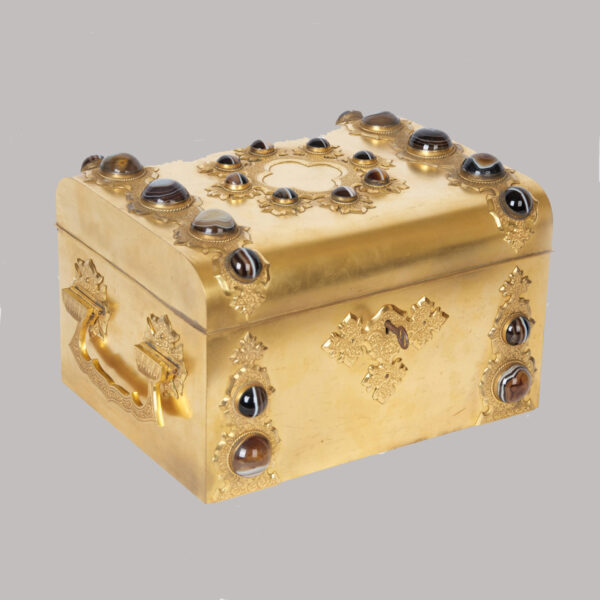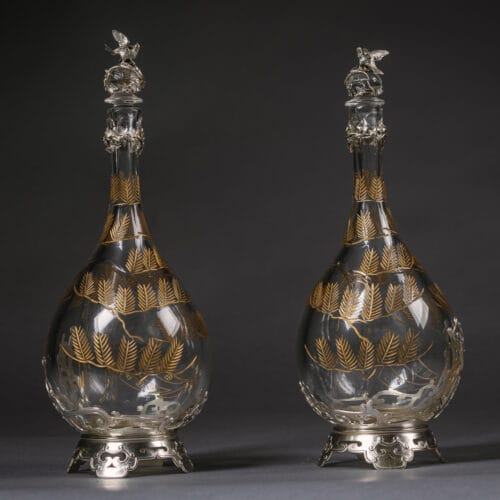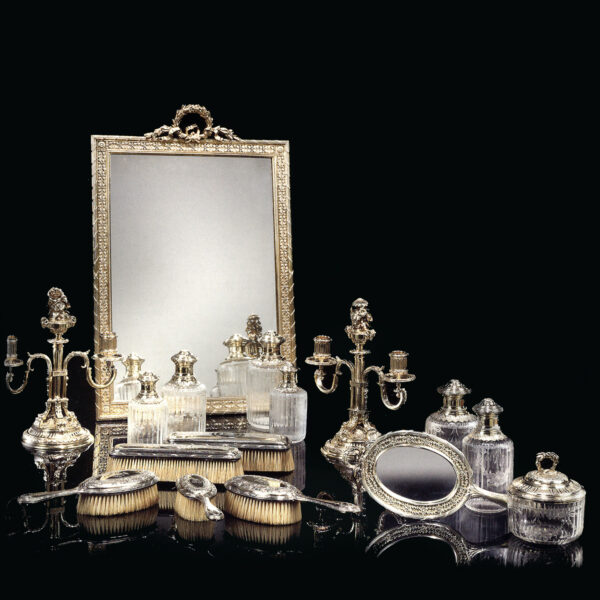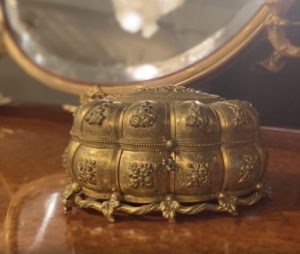Sarreguemines
A Pair of Large Sarreguemines Sang de Boeuf Jardinières On Pedestals
£18,000
A Pair of Large Sarreguemines Majolica Sang de Boeuf Glazed Earthenware Jardinières On Pedestals. Each bowl with moulded leaf decoration, lion head...
Dimensions
Height: 96 cm (38 in)Width: 63 cm (25 in)
Depth: 42 cm (17 in)
Description
A Pair of Large Sarreguemines Majolica Sang de Boeuf Glazed Earthenware Jardinières On Pedestals.
Each bowl with moulded leaf decoration, lion head handles and Bleu de Deck interior. On a baluster socle with square foot. The tapering pedestals with neoclassical ornament of foliage, masks and birds, corned by rams heads above paw feet.
Impressed stamp ‘SARREGUEMINES / 849 / 227’, and ‘4 / 01’
The urns are Form Number 849 called ‘Coupe ovale Porphyre’.
The stamp ‘4 / 01’ identifies a date of manufacture as April 1901.
The large urns on pedestals in faience ceramic (tin-glazed earthenware pottery known as majolica) are designed in the Renaissance Revival style and representative of the most magnificent creations made at Sarreguemines.
Sarreguemines was awarded for producing brilliantly-glazed ceramic creations. Most impressive are their pedestals, jardinieres, fountains, and cachepots which exhibit an extraordinary degree of ceramic dexterity.
France, Dated 1901.
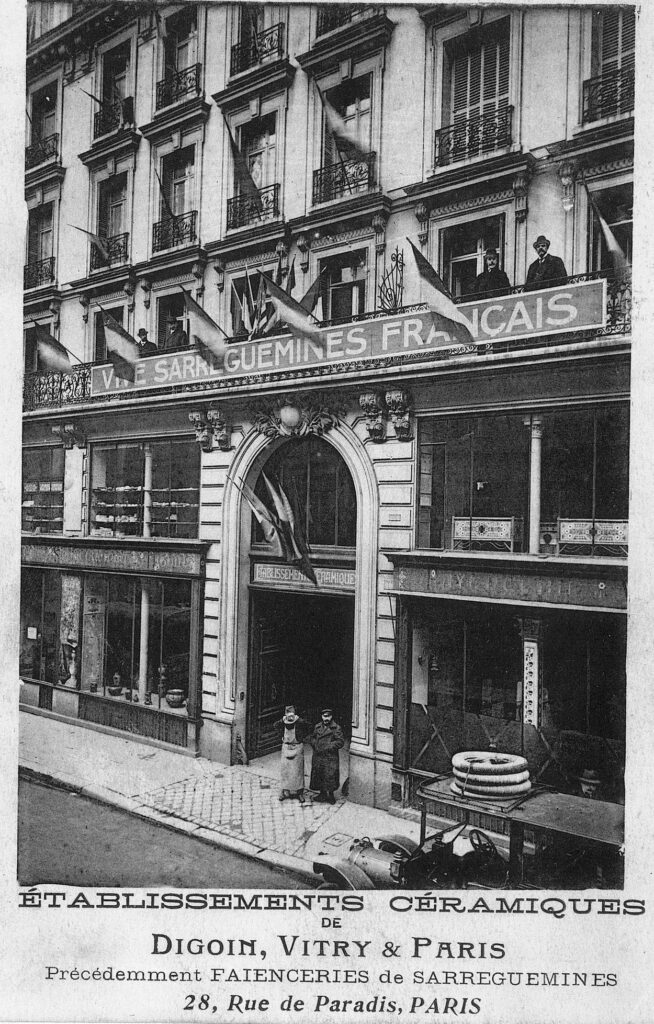
Sarreguemines head office, located in Paris (rue de Paradis), celebrating the return of the Sarreguemines parent factory to France at the end of the First World War.
Overall: 96 cm (38 inches) high.
Urns 36 cm (14 inches) high; 28 cm (11 inches) wide; 25 cm (11 inches) deep.
Pedestals: 90 cm (35 inches) high; 63 cm (25 inches) wide; 44 cm (17 inches) deep.
Date
Dated 1901
Origin
France
Medium
Glazed Earthenware
Signature
Impressed stamp 'SARREGUEMINES / 849 / 227', and '4/ 01'
The brothers Nicolas-Henri and Paul-Augustin Jacobi and their partner Joseph Fabry established a small pottery works in Sarreguemines, Lorraine, in about 1778. They were significantly assisted by the Bavarian born Paul Utzschneider, who had worked for Wedgwood and brought extensive technical expertise with him. Utzschneider took over the factory in 1800 and introduced new techniques. Emperor Napoleon I ordered several pieces and awarded Utzschneider the Légion d’Honneur.
In 1836 Utschneider left the management of the factory to his son-in-law, Alexandre de Geiger whose descendants operated the factory until the end of the nineteenth century. For the first half of the century Sarreguemines had produced imitations of English earthenware and stoneware and built its success, as did Choisy-le-Roi, on transferprinted faience. Both Choisy and Sarreguemines were influenced by Minton’s display of majolica at the 1855 Paris exhibition. In the early 1860s, like Choisy, Sarreguemines added majolica to its production. At the conclusion of the Franco-Prussian War in 1874, Sarreguemines became German territory and in order to sell its wares in France, established a branch in Digoin, France, in 1876, and a warehouse in Vitry-le-Frangois, in 1881.
Sarreguemines majolica was brilliantly glazed and spectacular: large pedestals, jardinieres, fountains, and cachepots, many of them decorated with Renaissance motifs similar to those of Minton majolica and all bearing witness to an extraordinary degree of ceramic dexterity. The mark on majolica was the word “majolica” stamped above “sarreguemines” and, after 1881, “d.v.” (for Digoin and Vitry). Alexandre de Geiger left Sarreguemines and retired in Paris in 1871. His son Paul de Geiger took over the management and two new factories were constructed at Digoin and Vitry-le-François. Paul de Geiger died in 1913, the year in which Utzschneider & Cie. was split into two companies, one responsible for the factory in Sarreguemines and the other for the French factories. The Sarreguemines factory produced most of the original tiles used during the construction of the Paris metro.
Literature:
Marilyn G. Karmason, Majolica : a complete history and illustrated survey, New York, 2002.
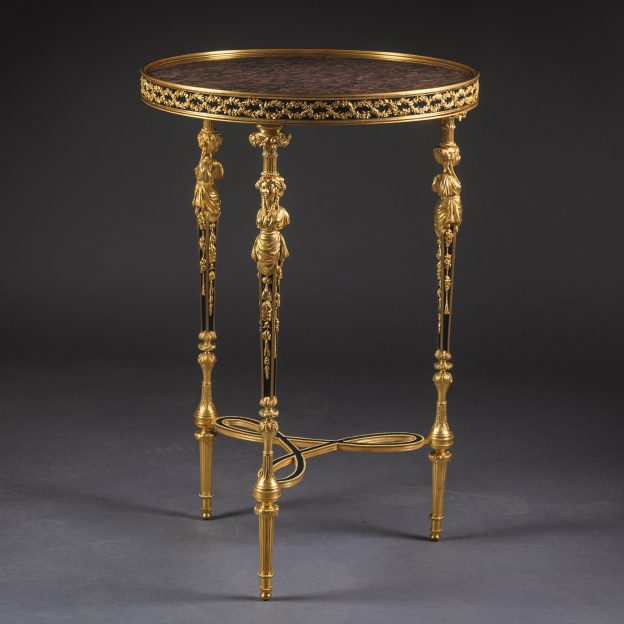




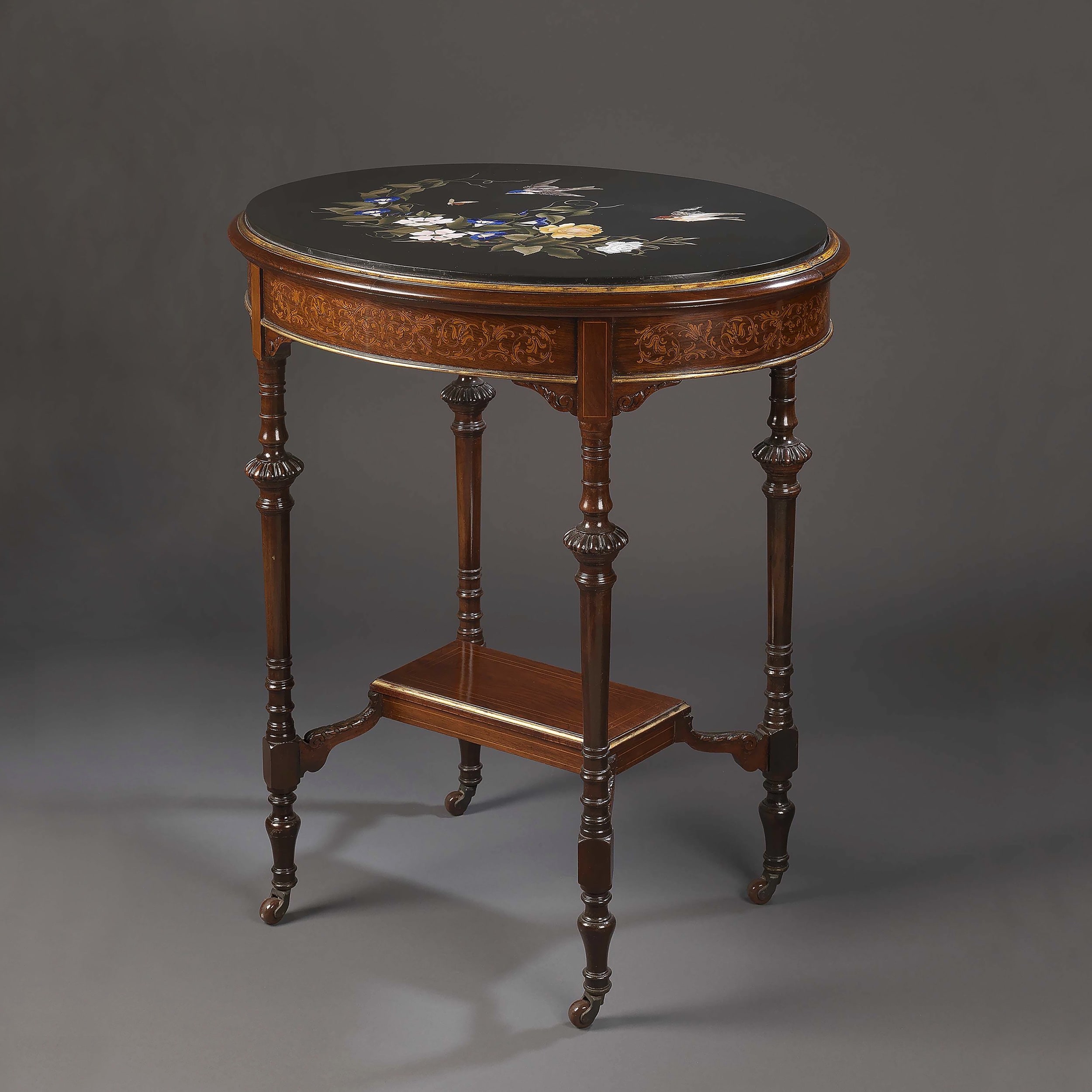
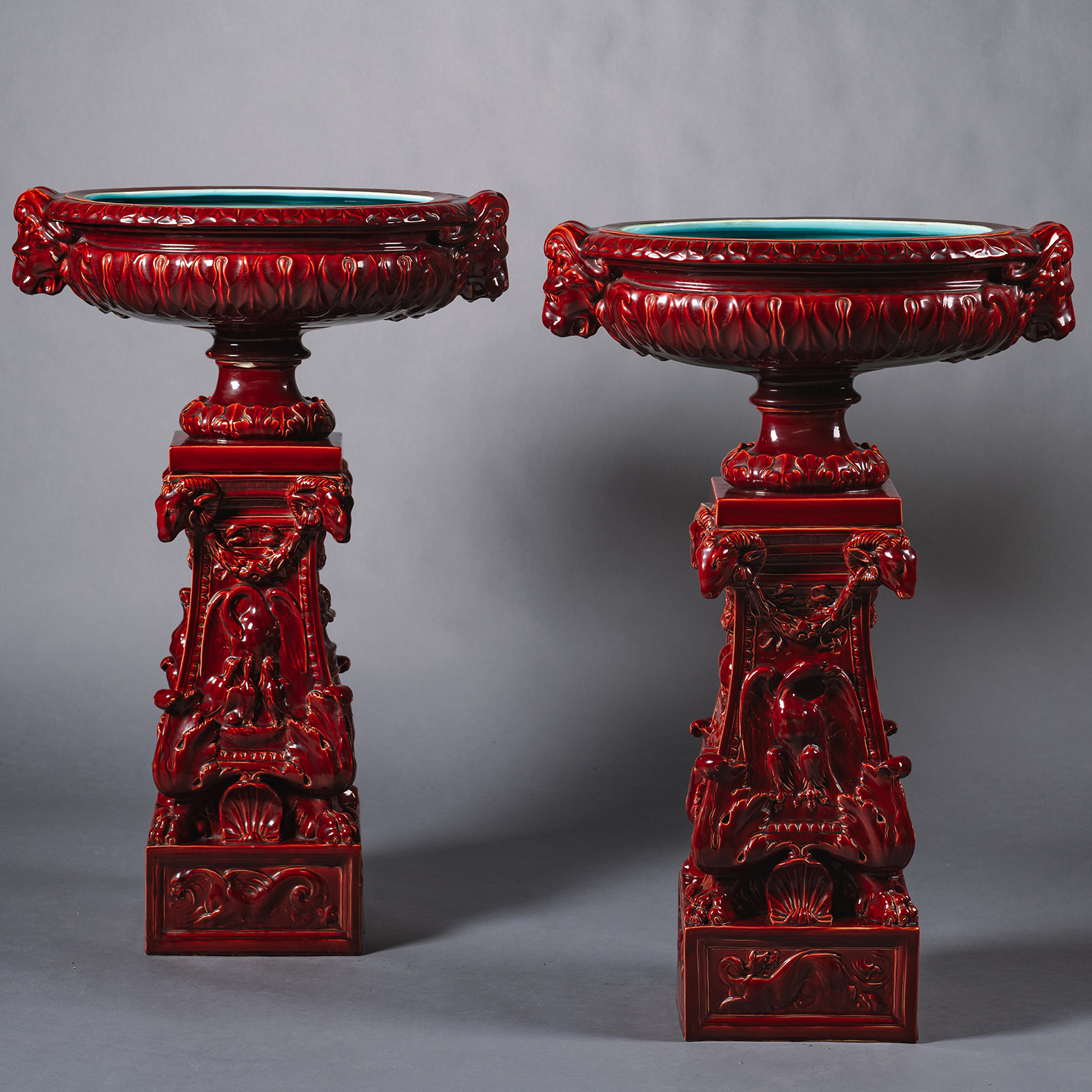
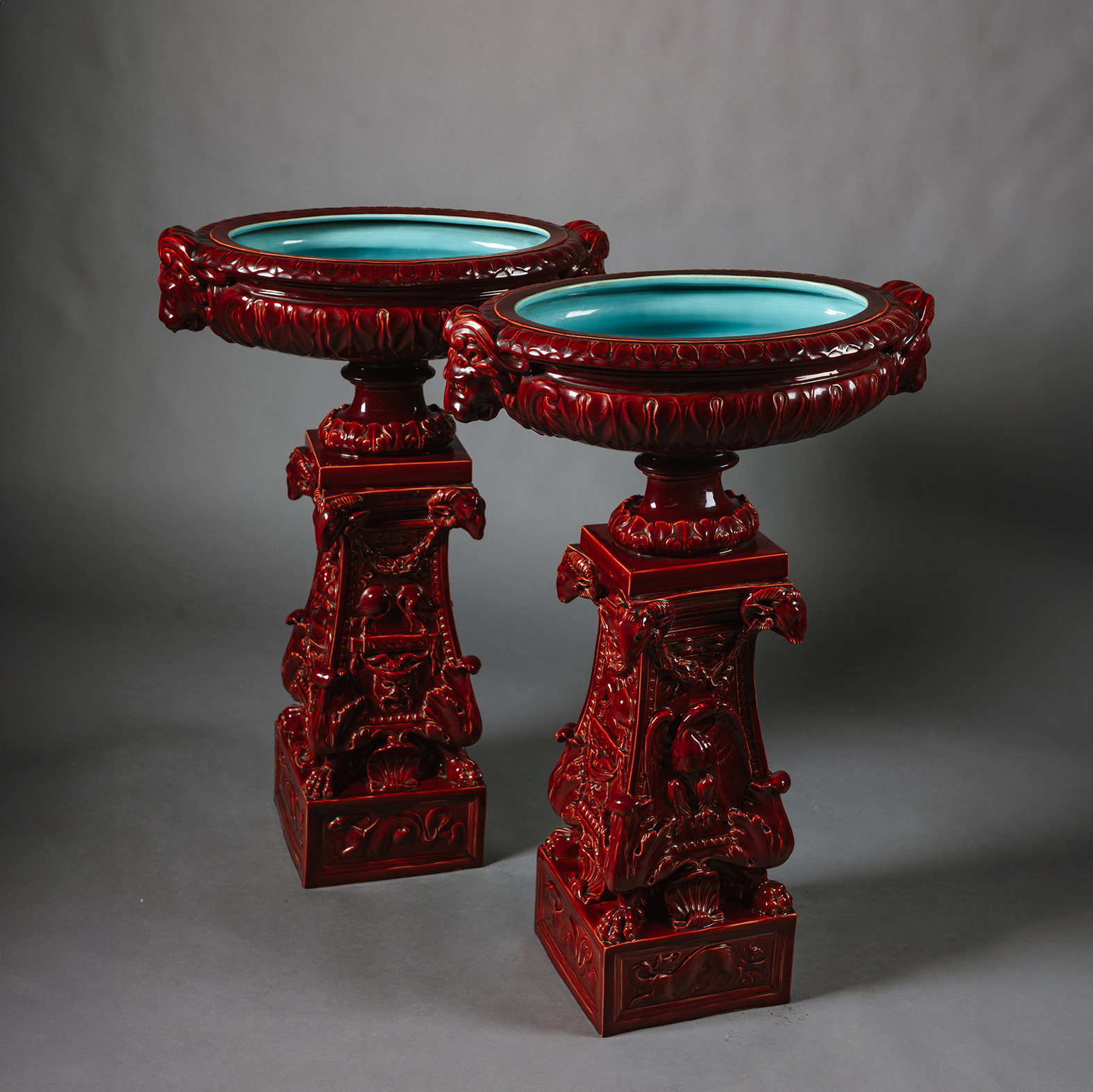
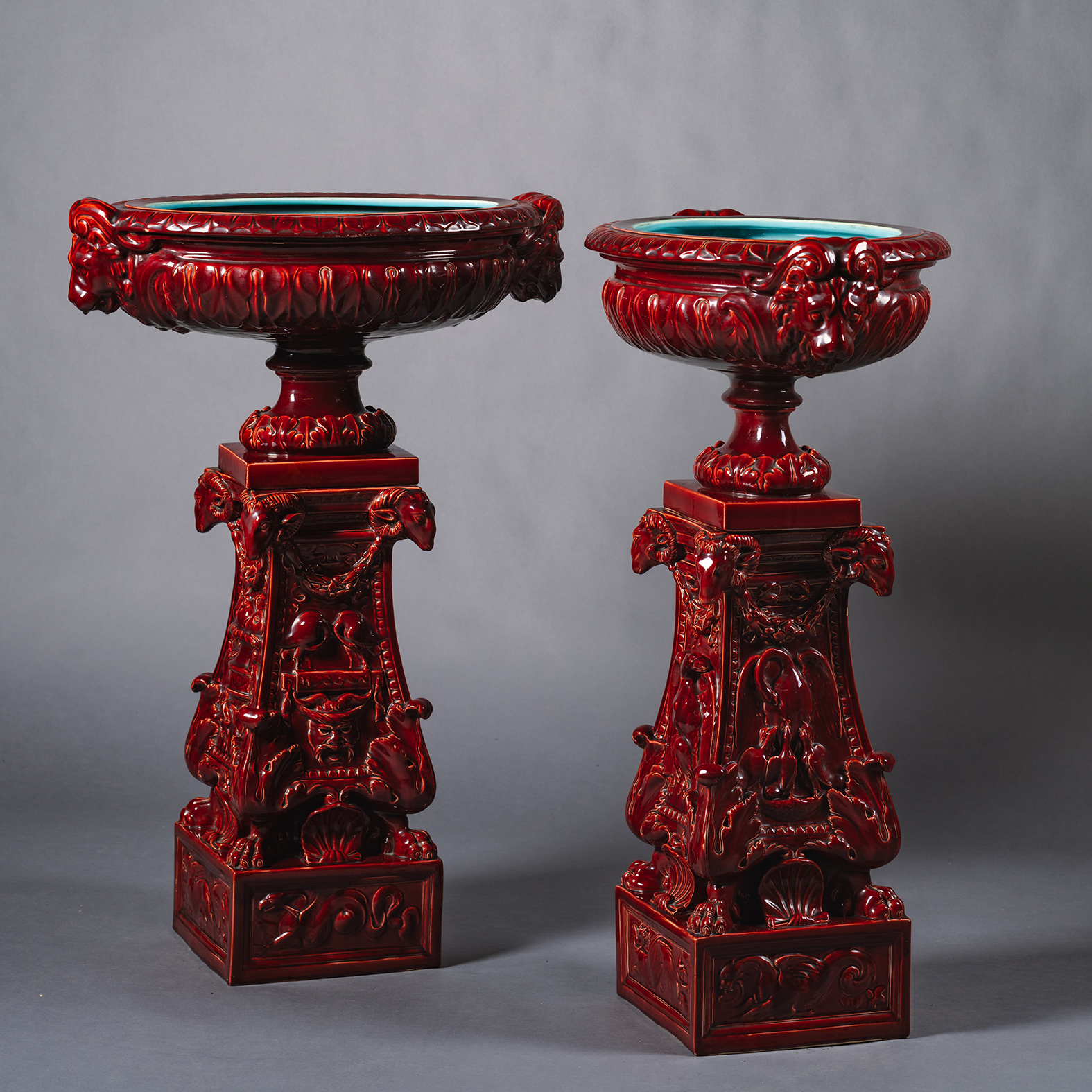
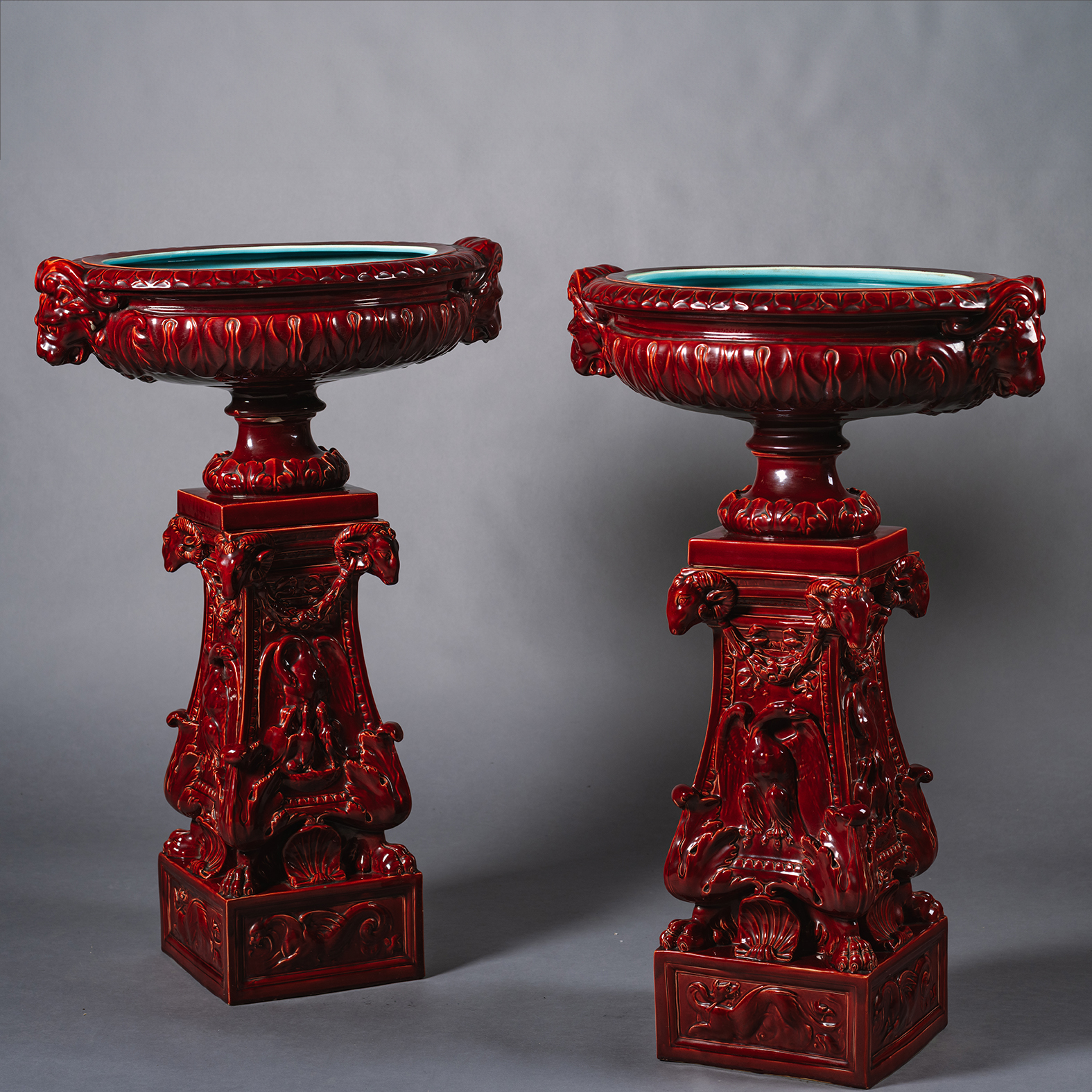
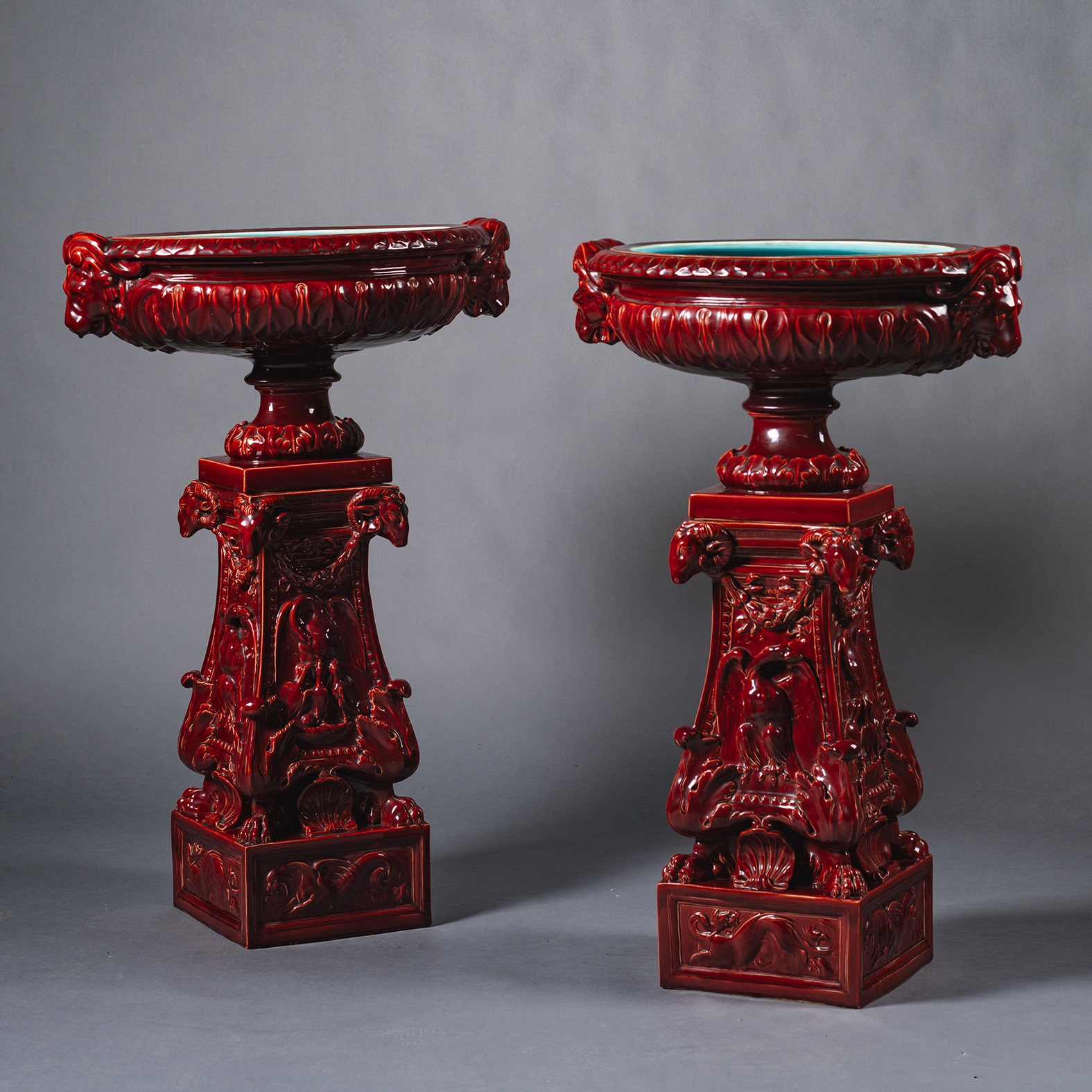
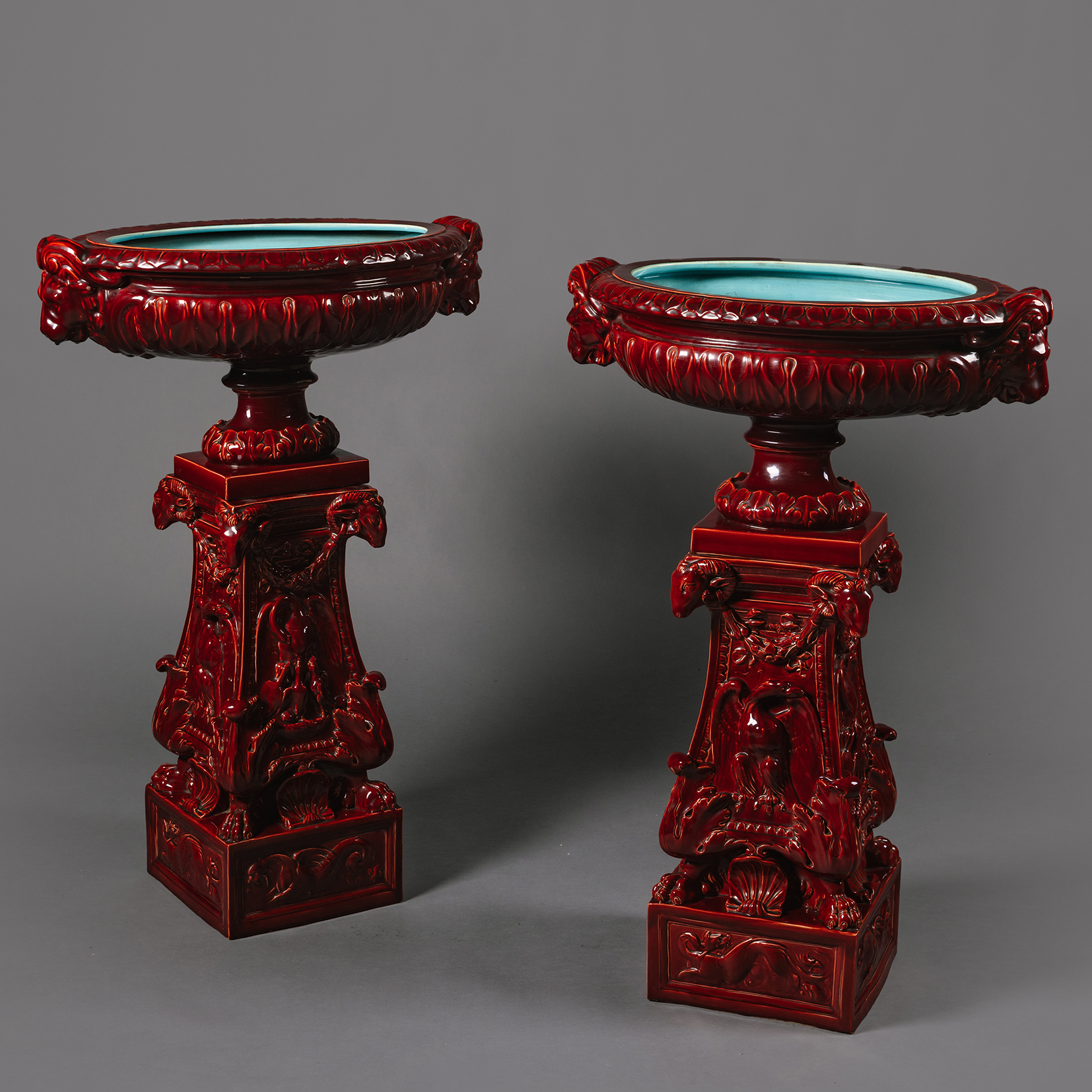
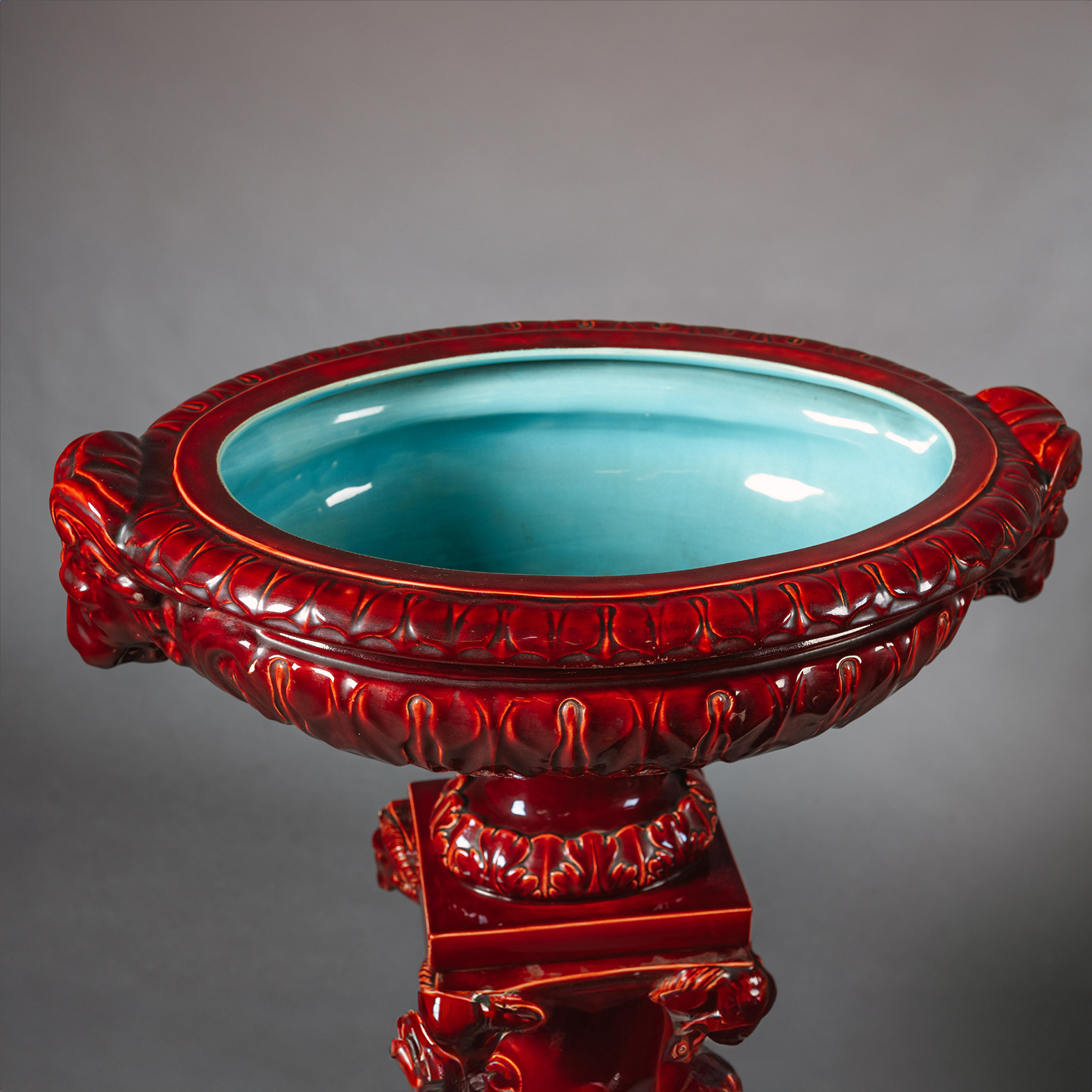
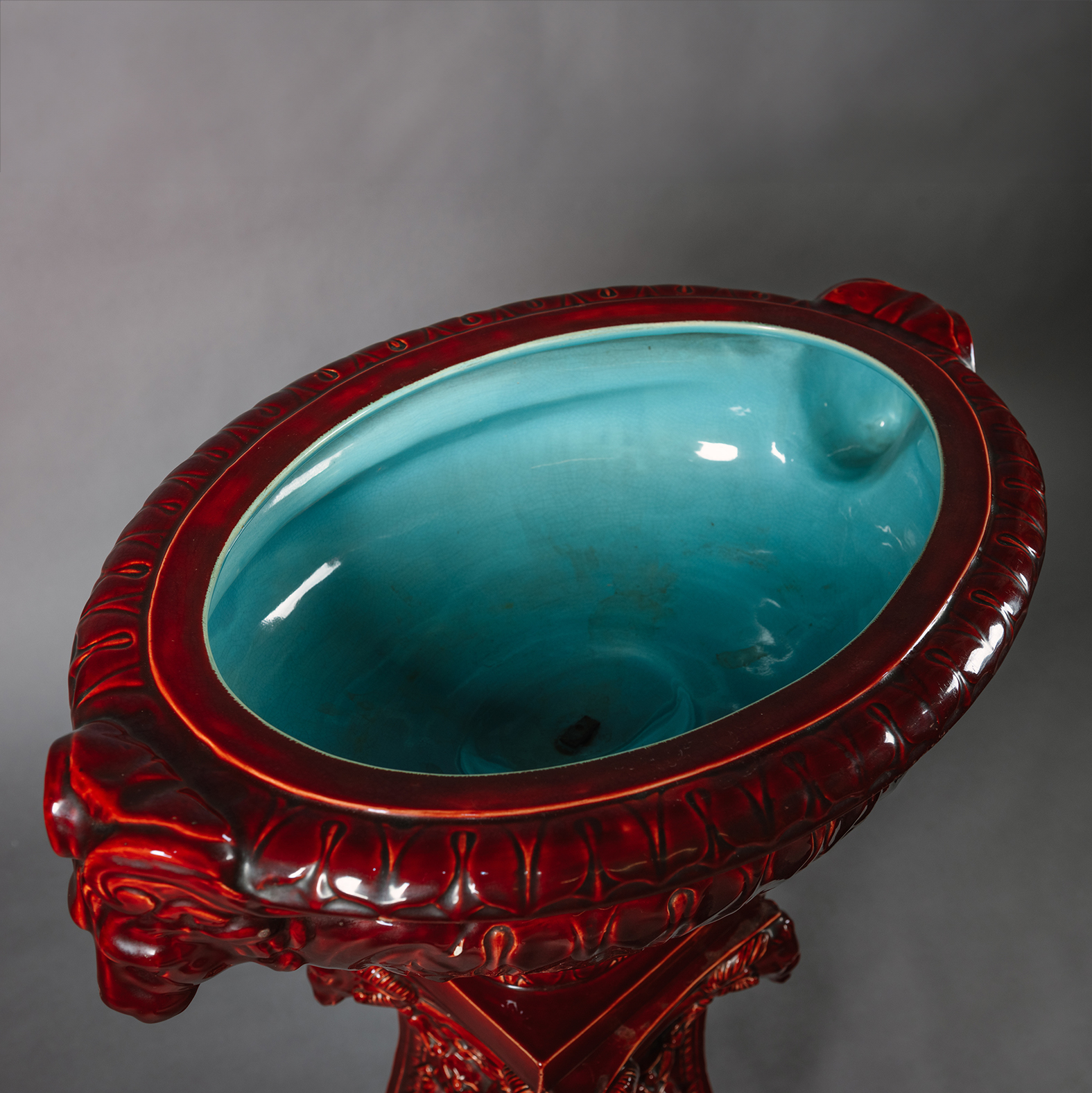
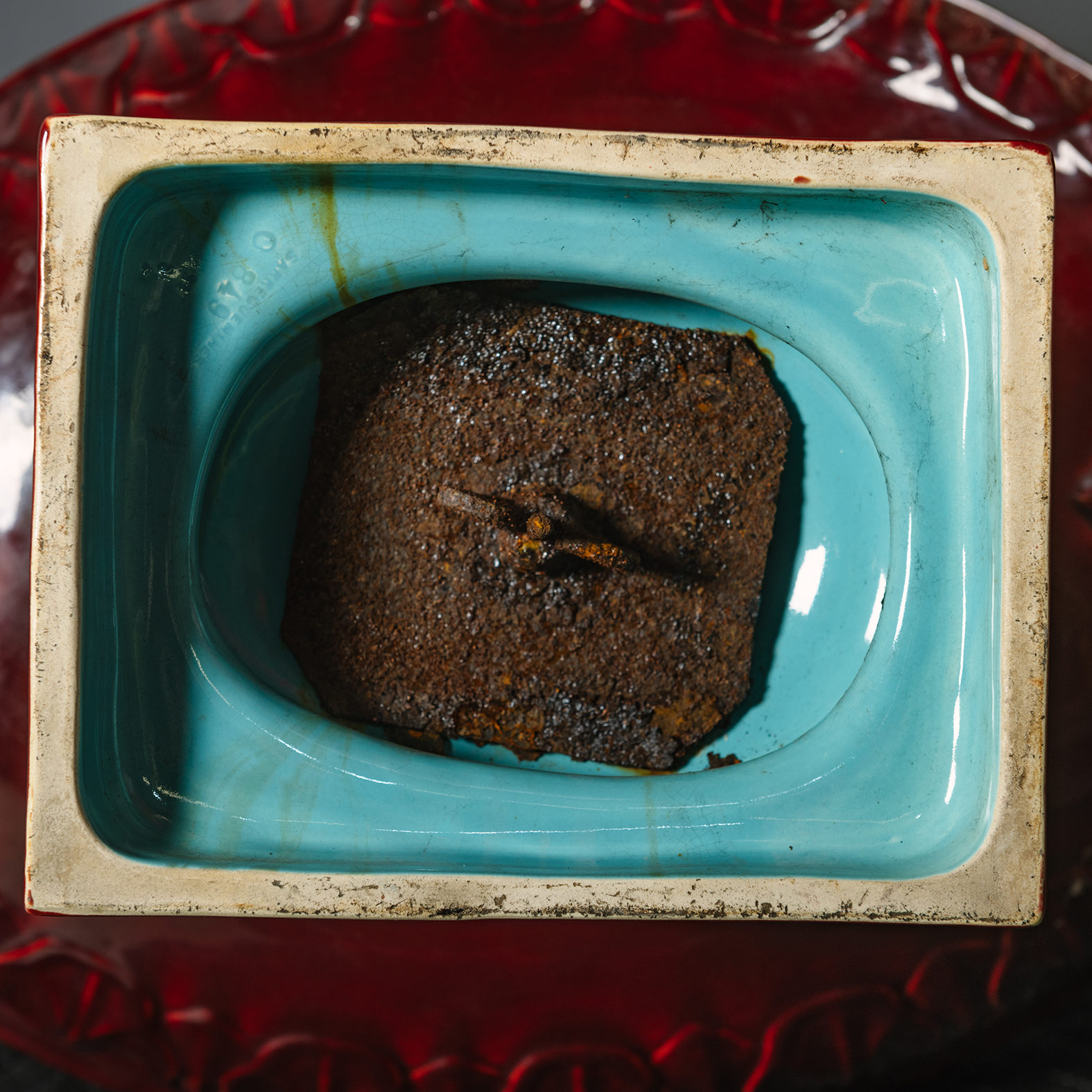
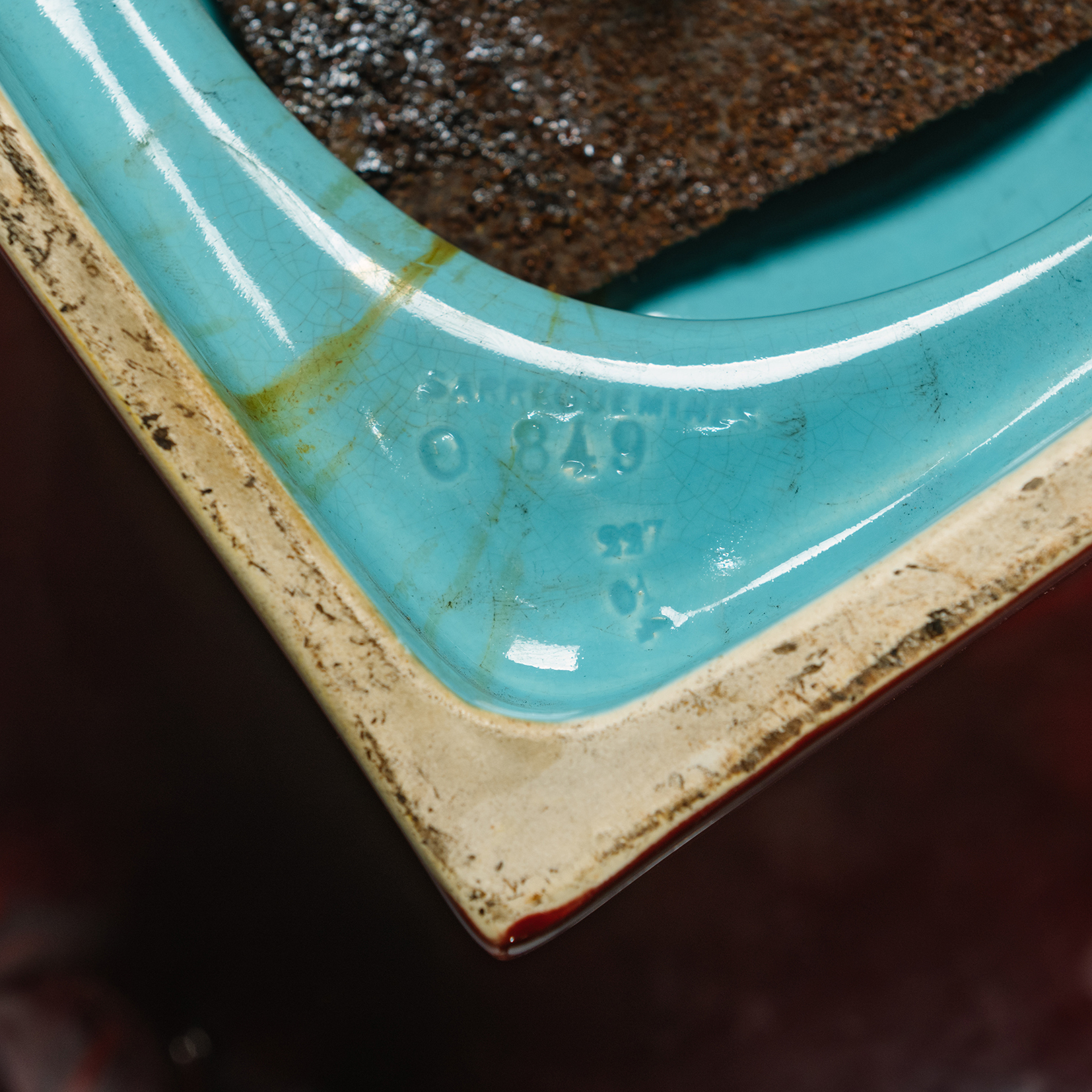

 Print
Print